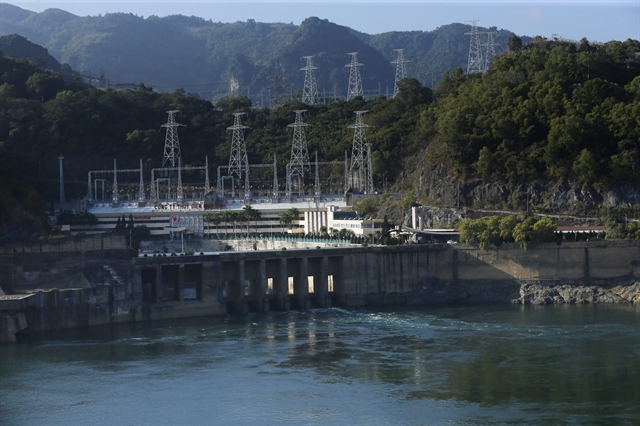 Society
Society

The national irrigation department has reported a staggeringly low level of water reserves in northern and central regions, signalling the threat of a severe drought in 2020.

|
| Hòa Bình reservoir in December 2019 was at its lowest level since it opened 30 years ago. — VNA/VNS Photo |
HÀ NỘI — The national irrigation department has reported a staggeringly low level of water reserves in northern and central regions, signalling the threat of a severe drought in 2020.
According to the latest survey by the General Department of Irrigation conducted in December, water levels in several reservoirs in the northern delta had fallen to 62.2 per cent of their total capacity.
By the time reservoirs start releasing water for farmers to prepare to plant their winter-spring rice crops in less than two weeks, reservoirs would be at 58 per cent of capacity, equivalent to 9.51 billion cubic metres.
That would leave the northern delta short of more than seven million cubic metres of water, the irrigation department warned.
The central region, which is also preparing to plant crops, is in the same situation.
Some reservoirs in the northern part of the region had fallen to 66 per cent capacity, reported the irrigation department.
Going south
Water reserves in reservoirs in the south had dropped to as low as 49 per cent.
Two reservoirs were reported to be below the catastrophic drought of 2015, with A Vương at 22 per cent and Đăk Đrinh currently at 59 per cent capacity.
Water reserves in Ninh Thuận and Bình Thuận provinces – two localities most vulnerable to drought in Việt Nam – were barely higher than in 2015 by 6 to 9 per cent, according to the department.
The Ministry of Agriculture and Rural Development (MARD) held an emergency meeting on December 28 to examine the drought outlook for the upcoming crop season and 2020, and come up with solutions to alleviate the impacts of the expected drought.
Department of Crops Director Nguyễn Như Cường said at the meeting that up to 7,400ha of fields in the north would “face problems accessing water”, with Hà Nội, Bắc Ninh, Vĩnh Phúc and Phú Thọ most affected.
The irrigation department warned that the northern part of the central region would be vulnerable to drought in some areas during the winter-spring crop season with between 4,500 and 9,000ha short of water.
Thanh Hóa Province faced up to 3,750ha at risk while Nghệ An had a potential 5,000ha that could be damaged, with a further 250ha at risk in Thừa Thiên-Huế.
Forecasts for the south were bleaker as irrigation officials believed some areas would suffer small-scale droughts in the winter-spring season and mild or severe droughts in the summer-autumn season.
“Ninh Thuận and Bình Thuận are most vulnerable to drought in the region,” reported the irrigation department.
Dead storage capacity
Unfavourable weather conditions offered little hope of alleviating the water shortage as total rainfall in the first six months of 2020 was forecast at 30-60mm a month, according to the National Centre for Hydro-Meteorological Forecasting.
The outlook has become so tense that Vietnam Electricity (EVN) has urged MARD to publicly announce the water shortage and work on solutions to adapt to the drought.
EVN, which operates several hydroelectric power plants in the north and central regions, is under great pressure to maintain power supplies.
EVN Deputy General Director Ngô Sơn Hải said this year was the first time no floods had arrived on the Đà River since the dams went into operation three decades ago.
The Hòa Bình reservoir was at its lowest level of only 54 per cent, and could plummet to only 8 per cent following water releases for agricultural purposes this year, he said.
Another big reservoir at Tuyên Quang could also go down to 8 per cent by that time, Hải added.
“That would leave them at dead storage capacity,” he said.
Agriculture Minister Nguyễn Xuân Cường demanded all localities affected by the drought to develop detailed plans to ensure sufficient water for their crops.
Hà Nội, one of the localities to be hardest hit, had already mapped out a plan to install more permanent pumping stations as well as seasonal pumps along the Hồng River, said Department of Agriculture and Rural Development Director Chu Phú Mỹ.
The city was also considering switching to crops that consumed less water to prepare for the drought, he said. — VNS




